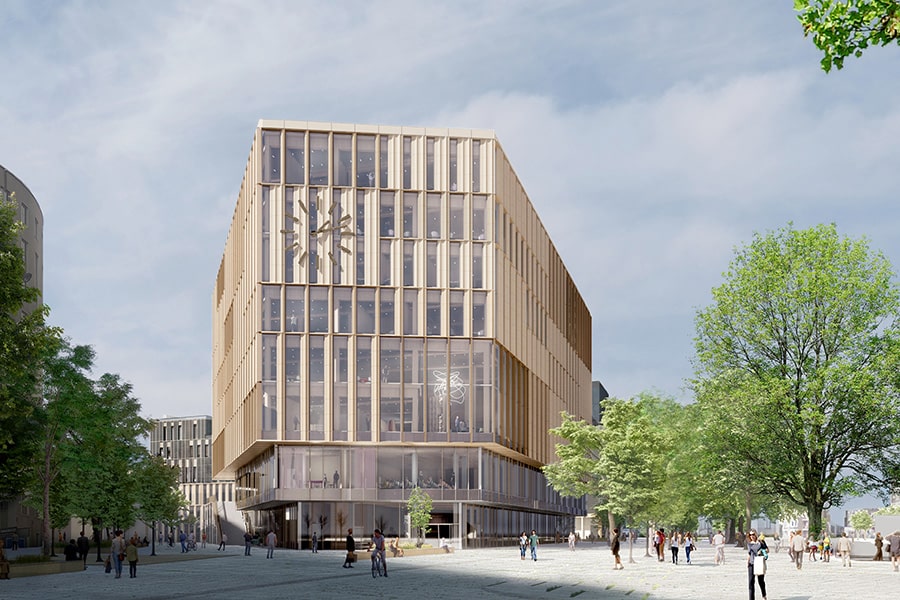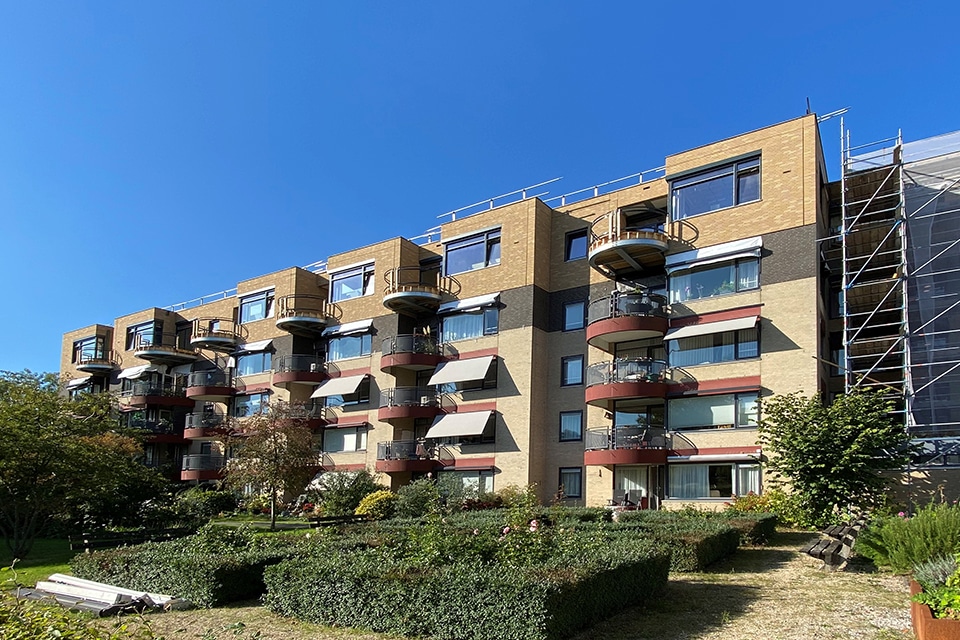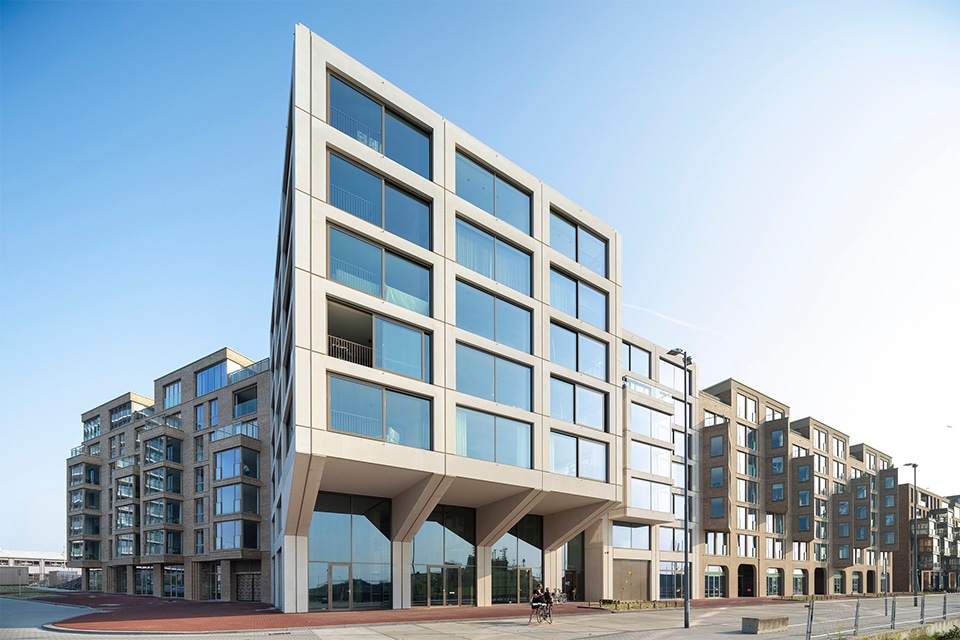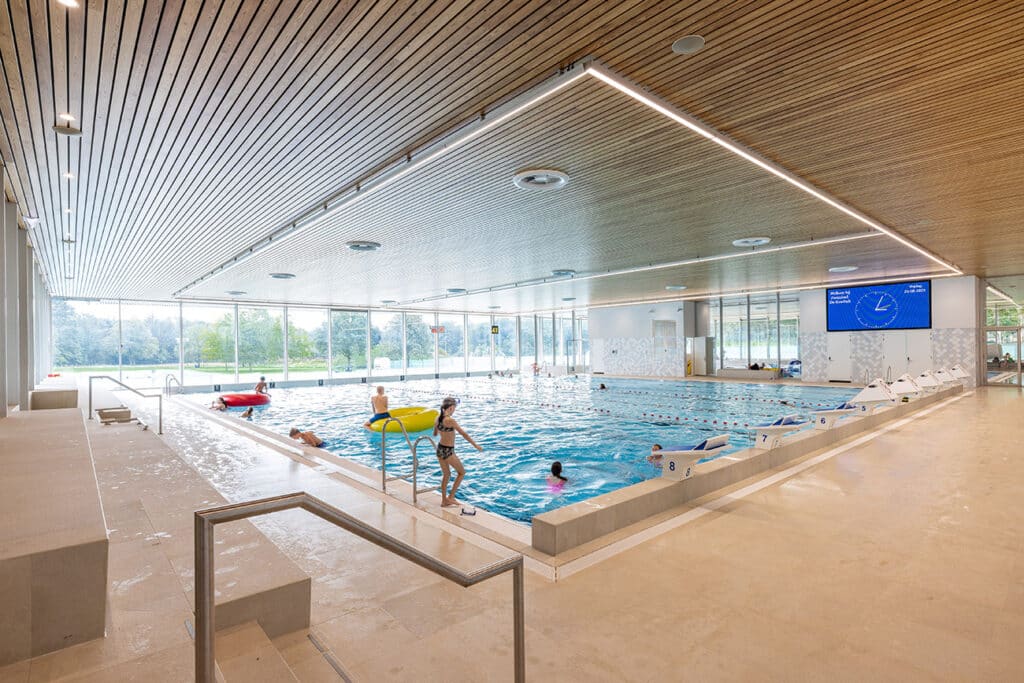
The most sustainable swimming pool in the Netherlands
In Rijssen, the old swimming pool de Koerbelt has been replaced by a new building. The municipality of Rijssen-Holten engaged consulting firm OLCO for a feasibility study. That proved a success: in 2017, OLCO was asked to take on the construction and project management and develop the new pool into the most sustainable pool in the Netherlands. Mark Westra, director-owner at OLCO, talks about this sustainable project.
The pool was completed in June 2023 and is now fully open to the public. It is located in a special spot in Rijssen, in the middle of nature. "The pool fits very naturally into its surroundings," Westra says. "Everywhere around you and in the pool you see people exercising or playing sports. The building itself also feels very open and sleek. It is high-quality incorporated and an architectural gem."
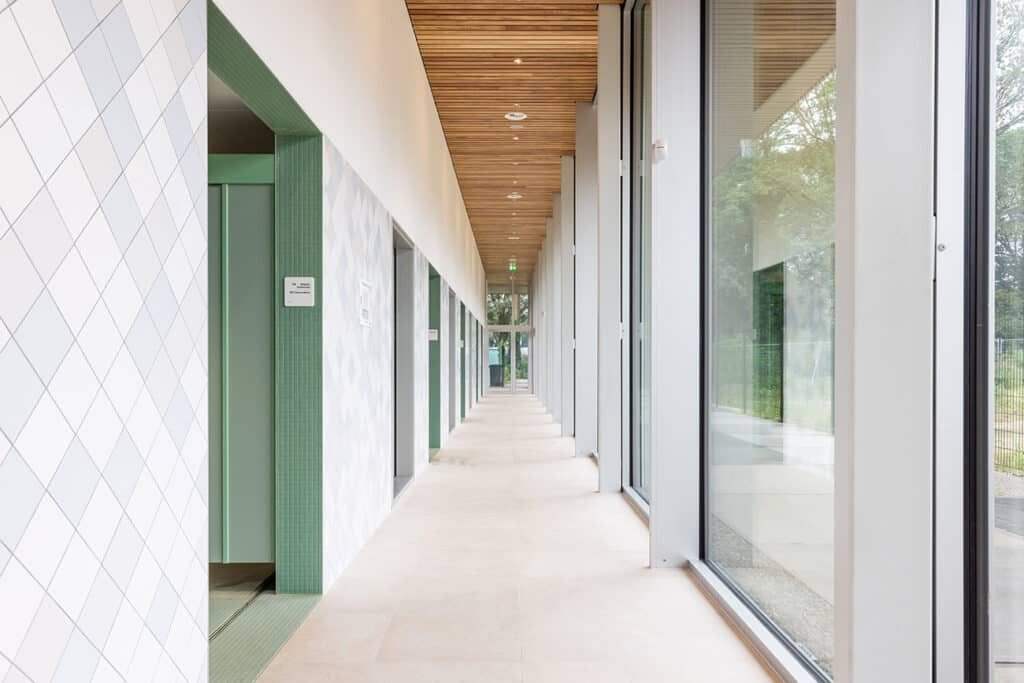
Sustainability central
The municipality was clear about the goal of this project: sustainability is key. "De Koerbelt had to become the most sustainable swimming pool in the Netherlands. And we acted accordingly. The pool is self-sufficient and, in the future, hopefully energy-positive. Solar panels on the roof provide energy and so-called heat pipes heat the building and water," Westra says. But that's not all. Thanks to an innovative system of batteries, heat and energy are stored, making the pool no longer dependent on the electricity grid. In addition, the pool has its own water source. "This allows the pool to refresh the water from its own supply."
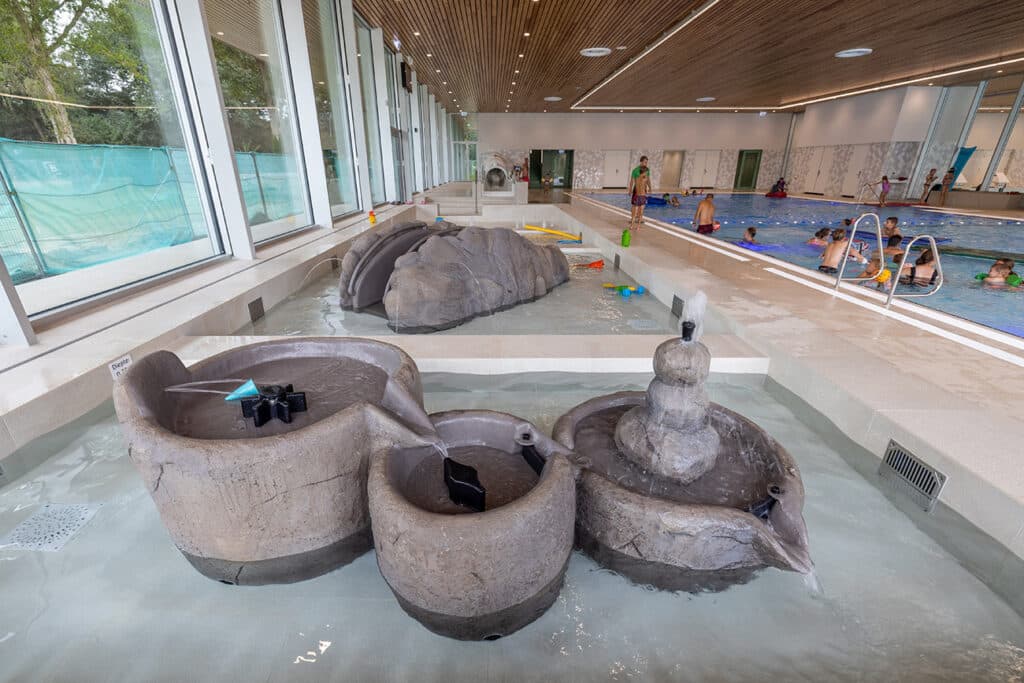
Biobased battery system
The battery system is a first for the Netherlands. "For this project we applied innovative biobased battery systems, which can store sustainably generated energy and heat for a long period of time. There are no heavy metals like lithium in these batteries, so it is a very sustainable storage. And the best part? The batteries are stored in an energy cellar half underground, which blends into the landscape," says Westra.
Towards an energy-positive future
In the future, the pool will hopefully become energy positive. This depends on visitors and climate. "The flow and number of visitors varies greatly between summer and winter. In summer you quickly have several thousand visitors who can swim outside. In winter, fewer people come and more energy is needed to maintain the indoor climate. This costs more energy and affects the energy balance of generation and batteries. The pool is largely self-sufficient, but whether it will generate energy remains to be seen."
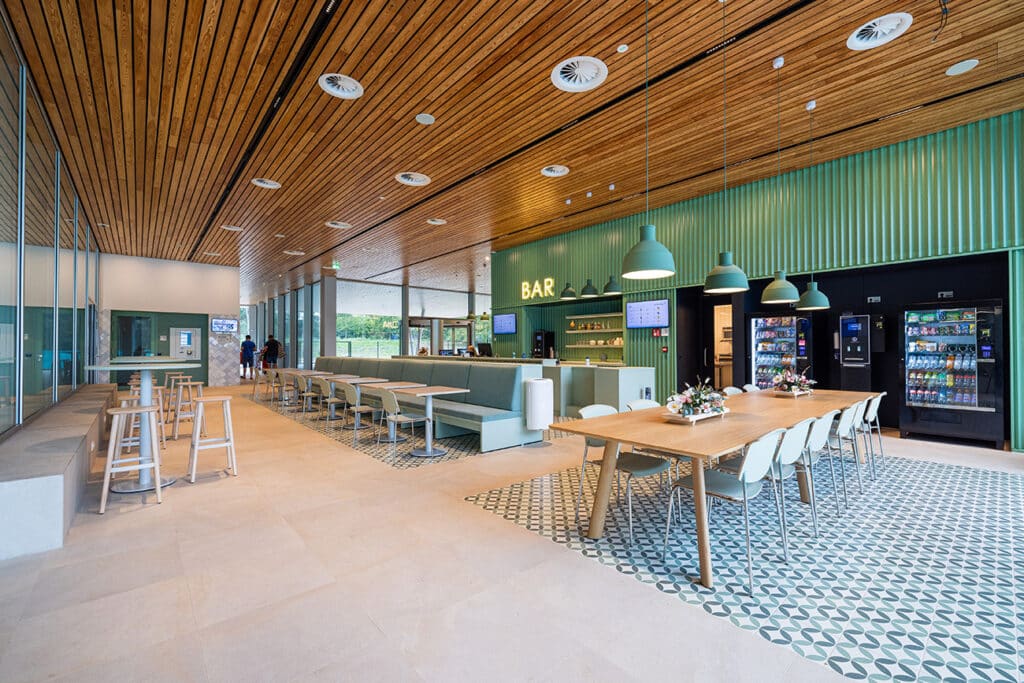
Sustainable cooperation
"It is a unique project for the municipality, but in our projects we try to inspire parties to dare to think and act further. We want to lead the way with social real estate, such as a swimming pool. The Koerbelt is a public building and thus made possible with social resources. We therefore consider it extra important to think a step further and step outside the box. We are very pleased that despite all the challenges of the past few years, we managed to realize this sustainable and architecturally high-quality swimming pool. Our role is to connect all the experts and have them work together to achieve challenging goals. After all, you only achieve such an end result with a complete team that has confidence in each other. And that certainly succeeded here," Westra said.
- Client Municipality of Rijssen-Holten
- Architect Reitsema & partners architects i.c.w. Wehrung architects
- Constructor Lucassen Bouwconstructies B.V.
- Contractor AKOR Draisma VOF
- W- and E-installations Installation company G. van Dam b.v.
- Water Treatment Water treatment Hollander Techniek b.v.
- Construction period November 2021 - May 2023
